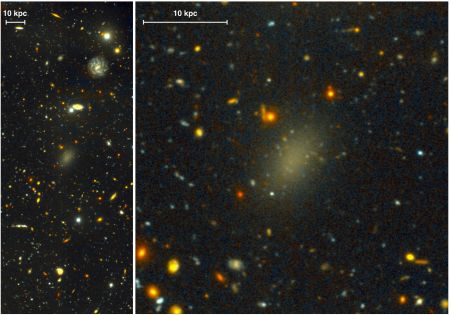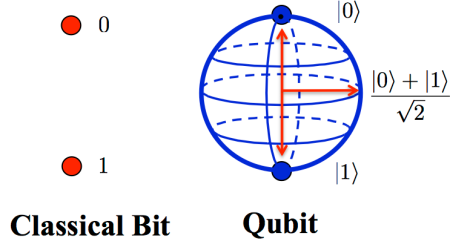A giant galaxy made nearly entirely of Dark Matter has been discovered. Theories of Dark Matter proposed by people salaried for professing physics cannot explain (easily, if at all!) why there would be so much Dark Matter in one galaxy. I can. In my own theory, Dark Matter is not really matter, although matter gives birth to it, under some particular geometrical conditions. In my theory, in some geometrodynamic situations, a galaxy will churn inordinate amounts of Dark Matter quickly. So I was not surprised by the find.
There are many potential theories of Dark Matter. Most are fairly conventional. They typically hypothesize new particles (some of these new particles could come from new symmetries, such as supersymmetry). I do not see how they can predict why these particular particles appear in some places, and not others. However, the importance of location, of geometry, is a crucial feature of my own theory.
I predicate that the Quantum Interaction (copyright myself) does not have infinite range. Thus, quantum interactions, in some conditions of low mass-energy density, leave behind part of the Quantum Wave. Such debris have mass-energy, so they exert gravitational pull, but they have little else besides (most of the characteristics of the particles they were part of concentrate somewhere else).
[From the Hawaiian Gemini telescope.]
In my own theory, one can imagine that the geometry of a galaxy is, at some point extremely favorable to the creation of Dark Matter: it is just a question of dispersing the matter just so. The Dark Galaxy has 1% of the stars of our Milky Way, or less. In my theory, once Dark Matter has formed, it does not seem possible to make visible matter again with it (broken Quantum Wave debris float around like a cosmic fog).
All past science started as a mix of philosophy and science-fiction (Aristarchus, Lucretius, Giordano Bruno, Immanuel Kant, Lamarck are examples). One can only surmise it will be the same in the future, and this is supported by very good logic: guessing comes always before knowing. Those who claim that science will never be born again from philosophy and fantasy are saying that really new science will never happen again. They say that all the foundations of science are known already. So they are into predication, just like religious fanatics.
It was fashionable to say so, among physicists in the 1990s, the times of the fable known as TOE, the so-called Theory Of Everything. Shortly after this orgasm of self-satisfaction by self-appointed pontiffs, the evidence became clear that the universe’s mass-energy was mostly Dark Energy, and Dark Matter.
This is an interesting case of meta-mood shared: also in the 1990s, clever idiots (Fukuyama, etc.) claimed history had ended: a similar claim from the same period, permeating the same mood of stunted imagination. The advantage, while those who pontificated that way? They could claim they knew everything: they had become gods, living gods.
I had known about Dark Matter all along (the problem surfaced nearly a century ago). I considered it a huge problem: It held galaxies and galactic clusters, together. But maybe something had been overlooked. Meanwhile Main Stream Physics (MSP) dutifully, studiously, ignored it. For decades. Speaking of Dark matter made one despicable, a conspiracy theorist.
Another thing MSP ignored was the foundations of physics. Only the most prestigious physicists, such as Richard Feynman, could afford to repeat Einstein’s famous opinion that “nobody understands Quantum Mechanics”. I gave my intellectual life’s main axis of reflection in trying to understand what nobody wanted to understand, that nobody thought they could afford to understand, the real foundations of physics. (So doing I was forced to reflect on why it is that people do not want to understand the most fundamental things, even while professing they do. It is particularly blatant in, say, economics.)
I have long discovered that the real foundations of physics are entangled with those of mathematics (it is not just that physics, nature, is written with mathematics, as Galileo wrote; there is a dialogue between the mathematics that we invent, and the universe that we discover, they lead to each other). For example whether the infinity axiom is allowed in mathematics change the physics radically (the normalization problem of physics is solved if one removes the infinity axiom).
Right now, research at the foundations of (proper) physics is hindered by our lack of nonlinear mathematics: Quantum mechanics, as it is, is linear (waves add up in the simplest way). However the “collapse of the wave packet” is obviously nonlinear (this is why it’s outside of existing physics, from lack of math). From that Quantum collapse, when incomplete from great distances involved, comes Dark Matter. At least, so I propose.
Patrice Ayme’











